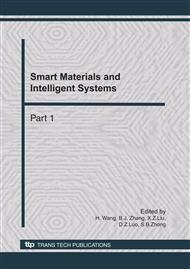p.1027
p.1031
p.1036
p.1041
p.1046
p.1051
p.1056
p.1059
p.1065
Genetic Algorithm and its Application in Optimization of Frequency Selective Surface
Abstract:
In this paper, a new genetic algorithm method to optimize the frequency selective surface(FSS) is presented. The optimization speed and definition are promoted by limiting the parameter range and changing the genetic basis. A new cost function is introduced to optimize the multi-frequency of FSS by multi-object optimization (MO). The cirque element was optimized by the optimization method, fabricated by the selective electroless plating on fabric and measured by the arch test system. Test result proves the simulated result coincide with measured result. Result shows that it’s possible to realize different optimizations based on the various applying by this method.
Info:
Periodical:
Pages:
1046-1050
Citation:
Online since:
October 2010
Authors:
Price:
Сopyright:
© 2011 Trans Tech Publications Ltd. All Rights Reserved
Share:
Citation:


